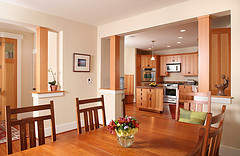- 2 reads

The numbers aren’t new. People spend 90 percent of their time indoors. A Toronto study by R.W. Bell indicates the level of contaminants inside of our buildings is at least two to five times higher than outside. The World Health Organization concludes that, in at least 30 percent of our buildings, the level of pollutants is high enough to cause a whole host of health problems ranging from sniffles to serious illness.
Combine the aforementioned statistics with the advent of buildings being documented and recognized as United States Green Building Council (USGBC), Certified, Gold, Silver or Platinum level “green buildings.” The average person could easily think the indoor air quality of the building is being adequately addressed if a building receiving its “green pedigree.” Unfortunately, often this is not the case.
As an accredited Leadership in Energy and Environmental Design (LEED) professional by the USGBC and the founder of a company that sells many sustainable home and commercial products, such as flooring, air purification units and systems, FSC wood and zero VOC cabinetry, it was dismaying to discover that many USGBC projects often overlooked the indoor and interior components of the “greening” process where we live and work. This may be due to budgets being spent on the materials used to erect the building and the energy systems which run the building.
It may seem strange from a prioritizing perspective, but from a logistical perspective it makes complete sense. The inside is obviously the part of the building finished last. Budgets are running out. Points that fulfill on credits for green certification have already been adequately addressed. Products like zero VOC paints, flooring, carpeting, cabinetry, window blinds and furnishings, if they have even been specified during the design phase of the project, could and do regularly get swapped out for cheaper, more toxic versions. The result is compromised indoor air quality. I often think if we could see the toxic invisible space we live and breathe inside many of our buildings, we’d run out screaming. We know better.
Affect On Student Performance
One current project being co-funded by the Indoor Air Quality Association is studying the correlation between indoor air quality and student performance. The goal is to reveal the adverse impacts on student performance in the hopes of motivating schools and governmental agencies to improve indoor breathing environments. Reading about it, I remember a high school nurse I met in the office of an allergist I called on about a year ago.
We started talking in the waiting room of the physician and when I told her what I do, she told me about the renovations being done at the school where she works.
“They told us nothing they were using or doing was affecting the air quality … but I know it’s not true. I’ve seen a significant increase in upper respiratory problems and nosebleeds. I’ve even began experiencing problems myself,” she said.
I shook my head, and said I was sorry to hear about it. I’ve heard so many stories like it and often wonder when we’re going to stop doing the studies to find out what is already known and, instead, begin addressing the issue of poor air quality with the product and system solutions that we already have.
BethAnn Lederer, LEED AP is the founder of Working Wonders, a company that offers a “one-stop” source where design-build professionals and consumers alike can quickly and easily find aesthetically pleasing eco-responsible products, knowledge and services to build out, furnish and accessorize green projects, homes and workplaces. BethAnn speaks and writes about the links that exist between human health and the products we choose to furnish and accessorize our homes and workplaces. Her perspective comes out of a former career in healthcare education, marketing and advocacy.

